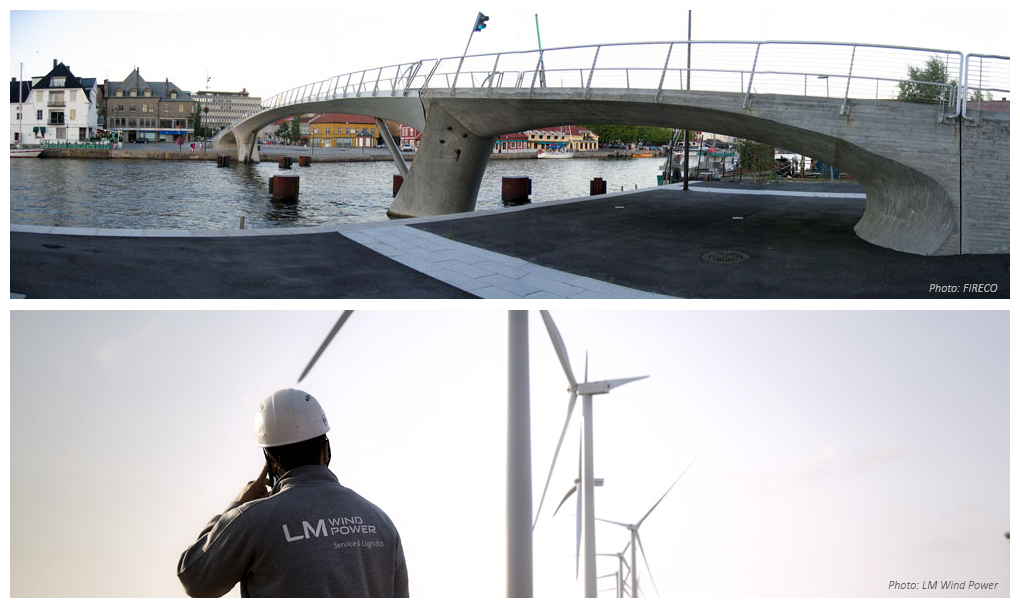DACOMAT project: New research in the use of composite materials aims to reduce bridge costs and provide more durable wind turbines

Bridges constructed with composite materials (fibre reinforced polymers) may become a familiar sight in Europe if a new pan-European research project achieves its objectives. The project also aims to provide more durable and reliable wind turbines.
Industry and research communities from five different countries are aiming to develop composite materials that are more resistant to damage than existing composites.
The objective of the recently launched DACOMAT (Damage Controlled Composite Materials) project is to develop composite materials with high capacity to sustain damage and fractures, making them suitable for structures requiring high levels of durability. This could result in the increased use of such materials in constructions like bridges, and enhance the durability of wind turbine blades, for which composite is already the preferred material.
The project participants will collaborate to ensure that any development of fractures in structures made of composite has a minimal likelihood of compromising their strength. In particular, the project will produce materials whose properties will make it more difficult for fractures to propagate than in existing alternatives. Methods are also being developed to monitor fractures.
An objective is to develop composites that will give bridges a longer lifetime than existing structures, while reducing lifetime costs by 30 per cent. In the case of wind turbine blades, the aim is a 30 per cent increase in durability and a considerable reduction in blade related costs.
The project may pave the way for pedestrian and cycle bridges that are constructed in composites, particularly in locations where soil conditions inhibit the use of heavier structures.
Know-how acquired in the DACOMAT project may also provide opportunities for the use of composites in road bridges, or more precisely hybrid bridge structures in which some of the construction elements are made from composites and others from fibre reinforced concrete.
Production of still larger blades at reasonable cost is a key point to reduce the cost of wind energy. DACOMAT will contribute to this by providing materials and knowledge that can enable use of lower safety factors and reduce the severity of production imperfection. The combination of the damage tolerant materials and remote structural health monitoring tools to be developed will contribute to establish condition-based operation and maintenance, thereby reducing the high inspection and maintenance costs in off-shore wind energy.
The project developments will also have general applicability to other structure with requirements to durability and resistance to harsh environmental conditions.
The project is included in Horizon 2020, the EU's framework programme for research and innovation. It was launched in January 2018 and will run until the end of 2021. The project has a budget of EUR 5.9 million, and is fully funded by the European Commission.
Participants include SINTEF (coordinator, Norway), Polynt (Norway), FiReCo (Norway), DNV GL (Norway), DTU Wind Energy (Denmark), LM Wind Power (Denmark), 3B Fibreglass (Belgium), Hexcel (UK), JCH Ecology (UK), University of Strathclyde (UK), Carbures Civil Works (Spain), Polytechnical University of Madrid (Spain).
Read more: www.dacomat.eu
For more information, contact:
Luc Peters, Technical Service Manager, Wind Energy, 3B-the fibreglass company
E-mail: luc.peters@3b-fibreglass.com
Telephone: +32 87 692 406
Jens Kjær Jørgensen, Senior Researcher, SINTEF
E-mail: Jens.K.Jorgensen@sintef.no
Telephone: + 47 982 43 957
